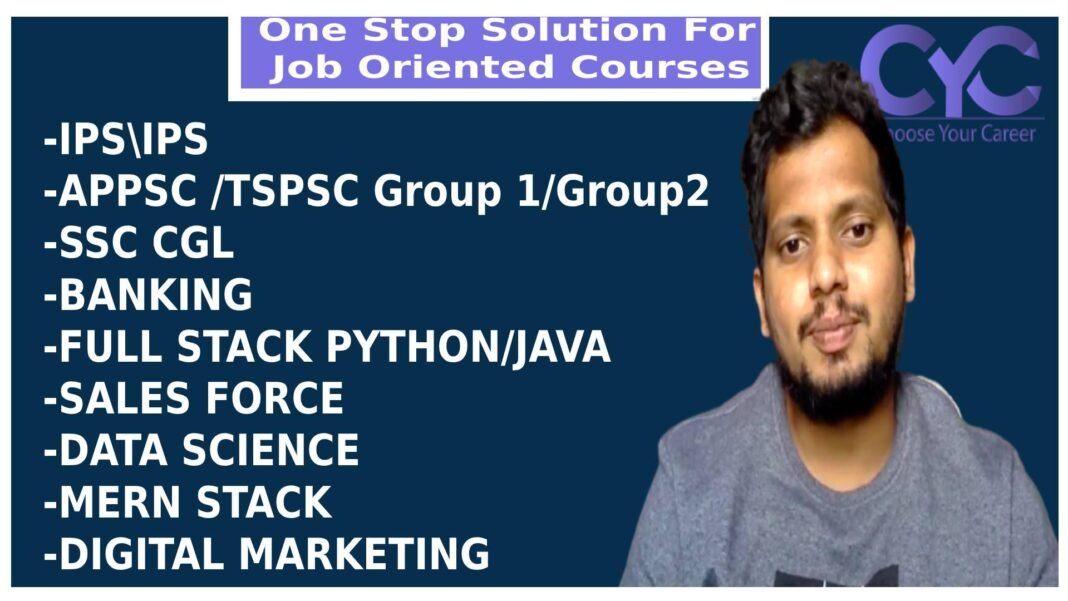Maths as an Optional Subject for UPSC
Choosing the right optional subject for UPSC CSE Mains is a very crucial decision that every UPSC aspirant has to make. A general thumb rule is that you should take the subject in which you have some academic background and a genuine interest. Along with this, some other factors like – past performance of the subject in UPSC, time frame required to prepare the subject, contribution of the subject towards General Studies syllabus and coaching available in the subject should also be considered in deciding the Optional Subject.
Same criteria apply to opting Mathematics as an Optional Subject for UPSC CSE Mains.
First of all, an aspirant need to have studied Maths in his/her graduation. Maths only till class 12th as a subject is not enough for UPSC Mains, no matter how well one had performed.
Secondly, an aspirant must have a genuine interest and passion for the subject, as the syllabus will seem humungous for someone lacking love for the subject. But a student who has a passion for Maths will not find developing concepts and practising them, hard at all.
This article discusses in detail all you need to know about Mathematics Optional for UPSC Civil Services.
Syllabus of Mathematics Optional for UPSC CSE Mains
In UPSC Mains Exam, the Optional Subject has 2 Papers – Paper I & Paper II. Each paper of the optional subject is of 250 marks, making it a total of 500 marks.
The syllabus of both the papers of Maths optional as per UPSC Official Notification is as follows:
Mathematics Paper I
(1) Linear Algebra:
Vector spaces over R and C, linear dependence and independence, subspaces, bases, dimensions, Linear transformations, rank and nullity, matrix of a linear transformation. Algebra of Matrices; Row and column reduction, Echelon form, congruence’s and similarity; Rank of a matrix; Inverse of a matrix; Solution of system of linear equations; Eigenvalues and eigenvectors, characteristic polynomial, Cayley-Hamilton theorem, Symmetric, skew-symmetric, Hermitian, skew-Hermitian, orthogonal and unitary matrices and their eigenvalues.
(2) Calculus:
Real numbers, functions of a real variable, limits, continuity, differentiability, mean-value theorem, Taylor’s theorem with remainders, indeterminate forms, maxima and minima, asymptotes; Curve tracing; Functions of two or three variables; Limits, continuity, partial derivatives, maxima and minima, Lagrange’s method of multipliers, Jacobian. Riemann’s definition of definite integrals; Indefinite integrals; Infinite and improper integral; Double and triple integrals (evaluation techniques only); Areas, surface and volumes.
(3) Analytic Geometry:
Cartesian and polar coordinates in three dimensions, second degree equations in three variables, reduction to Canonical forms; straight lines, shortest distance between two skew lines, Plane, sphere, cone, cylinder, paraboloid, ellipsoid, hyperboloid of one and two sheets and their properties.
(4) Ordinary Differential Equations:
Formulation of differential equations; Equations of first order and first degree, integrating factor; Orthogonal trajectory; Equations of first order but not of first degree, Clairaut’s equation, singular solution. Second and higher order liner equations with constant coefficients, complementary function, particular integral and general solution. Section order linear equations with variable coefficients, Euler-Cauchy equation; Determination of complete solution when one solution is known using method of variation of parameters. Laplace and Inverse Laplace transforms and their properties, Laplace transforms of elementary functions. Application to initial value problems for 2nd order linear equations with constant coefficients.
(5) Dynamics and Statics:
Rectilinear motion, simple harmonic motion, motion in a plane, projectiles; Constrained motion; Work and energy, conservation of energy; Kepler’s laws, orbits under central forces. Equilibrium of a system of particles; Work and potential energy, friction, Common catenary; Principle of virtual work; Stability of equilibrium, equilibrium of forces in three dimensions.
(6) Vector Analysis:
Scalar and vector fields, differentiation of vector field of a scalar variable; Gradient, divergence and curl in cartesian and cylindrical coordinates; Higher order derivatives; Vector identities and vector equation. Application to geometry: Curves in space, curvature and torsion; Serret-Furenet’s formulae. Gauss and Stokes’ theorems, Green’s identities.
Mathematics Paper – II
(1) Algebra:
Groups, subgroups, cyclic groups, cosets, Lagrange’s Theorem, normal subgroups, quotient groups, homomorphism of groups, basic isomorphism theorems, permutation groups, Cayley’s theorem. Rings, subrings and ideals, homomorphisms of rings; Integral domains, principal ideal domains, Euclidean domains and unique factorization domains; Fields, quotient fields.
(2) Real Analysis:
Real number system as an ordered field with least upper bound property; Sequences, limit of a sequence, Cauchy sequence, completeness of real line; Series and its convergence, absolute and conditional convergence of series of real and complex terms, rearrangement of series. Continuity and uniform continuity of functions, properties of continuous functions on compact sets. Riemann integral, improper integrals; Fundamental theorems of integral calculus. Uniform convergence, continuity, differentiability and integrability for sequences and series of functions; Partial derivatives of functions of several (two or three) variables, maxima and minima.
(3) Complex Analysis:
Analytic function, Cauchy-Riemann equations, Cauchy’s theorem, Cauchy’s integral formula, power series, representation of an analytic function, Taylor’s series; Singularities; Laurent’s series; Cauchy’s residue theorem; Contour integration.
(4) Linear Programming:
Linear programming problems, basic solution, basic feasible solution and optimal solution; Graphical method and simplex method of solutions; Duality. Transportation and assignment problems.
(5) Partial Differential Equations:
Family of surfaces in three dimensions and formulation of partial differential equations; Solution of quasilinear partial differential equations of the first order, Cauchy’s method of characteristics; Linear partial differential equations of the second order with constant coefficients, canonical form; Equation of a vibrating string, heat equation, Laplace equation and their solutions.
(6) Numerical Analysis and Computer Programming:
Numerical methods: Solution of algebraic and transcendental equations of one variable by bisection, Regula-Falsi and Newton-Raphson methods, solution of system of linear equations by Gaussian Elimination and Gauss-Jorden (direct), Gauss-Seidel (iterative) methods. Newton’s (forward and backward) and interpolation, Lagrange’s interpolation. Numerical integration: Trapezoidal rule, Simpson’s rule, Gaussian quadrature formula. Numerical solution of ordinary differential equations: Eular and Runga Kutta methods. Computer Programming: Binary system; Arithmetic and logical operations on numbers; Octal and Hexadecimal Systems; Conversion to and from decimal Systems; Algebra of binary numbers. Elements of computer systems and concept of memory; Basic logic gates and truth tables, Boolean algebra, normal forms. Representation of unsigned integers, signed integers and reals, double precision reals and long integers. Algorithms and flow charts for solving numerical analysis problems.
(7) Mechanics and Fluid Dynamics:
Generalised coordinates; D’Alembert’s principle and Lagrange’s equations; Hamilton equations; Moment of inertia; Motion of rigid bodies in two dimensions. Equation of continuity; Euler’s equation of motion for inviscid flow; Stream-lines, path of a particle; Potential flow; Two-dimensional and axisymmetric motion; Sources and sinks, vortex motion; Navier-Stokes equation for a viscous fluid.
Benefits of taking Maths as an Optional Subject in UPSC Mains Exams
- Static Syllabus – The syllabus of Maths Optional for UPSC is the curriculum followed by most of the universities and institutes in India. Anyone with Maths as a subject at undergraduate level whether they are engineering students or B.Sc/B.A students are familiar with most of the topics already. All that is left to be done is concept building and a thorough revision. This is unlike other optional subjects especially for engineering students, where they have to study the subject from scratch. Also as the syllabus is not linked to current affairs, so once you are done with the syllabus you don’t have to constantly update your knowledge, you just need to revise.
- Well balanced syllabus – We all know how anyone can end up doing a careless (silly) mistake in Maths like 2+3 = 6 which can be heart breaking and unavoidable unless the student checks and double checks the calculations. The great thing about UPSC maths syllabus is that it is well structured and balanced with emphasis on theorems and their proofs as well as the application part. Generally about 20-30% of both the papers each is based on providing proofs and knowing the theory. Obviously once the students know how to approach the proof it is only about logically writing all steps and concluding. This gives a break to the calculations and helps one increase their efficiency by reducing the chances of error.
- High Objectivity and hence Scoring – Maths is and has always been a scoring subject, be it in the UPSC exam or any other exam. In the past few years consistently students with maths optional have performed well and obtained very good ranks. The style of presentation matters as much as content in UPSC, especially in Maths. If a student learns how to present a solution in steps highlighting the main points one can easily predict the score in that question. Since the questions are not subjective or opinion based but factual it is not up to the examiner to give marks if content and presentation are both up to the mark.
- Less emphasis on memory – Of course some amount of remembering is required like basic formulae and key steps in the theorems but nothing compared to the amount students have to remember for prelims/mains/other optional subjects. This makes it attractive for those who are not so fond of cramming. Moreover the things to remember in maths is only about 10% of the entire syllabus which anyway one ends up keeping in mind because of practice and usage in majority of the questions.
- Less time to prepare the subject – If a student spends enough time and energy on building strong fundamentals in Maths and learns how to categorise/ recognise the problem types he/she can easily cover most types of possible questions that can be asked from that topic. It is a myth that maths takes more time to cover, yes the syllabus is quite a lot but due to the static nature if one topic is fully covered one needs to put in effort to only regularly revise that same portion and not learn newer things. So in retrospect if organised and managed well it can very well be covered in six months time (2-3 hours of class followed by same duration practice at home).
- Also what people usually call a disadvantage i.e., not having any portion common with the GS papers should be seen as an advantage as students can devise a study plan with distinct timings for remembering and practically doing questions.
Tips to score high in Maths Optional
If your teachers in school and college constantly told you to practice maths problems a lot and avoid silly mistakes to score high, then they were absolutely right. These are the basic keys to score high in Mathematics. Here, we have compiled some tips for you to score high in Maths Optional subject in UPSC Mains Exam.
- Practice more – Practicing makes you faster in problem solving and helps you improve speed and accuracy which ultimately will help you score high in exam.
- Avoid Silly Mistakes – Noting down even one symbol/number wrong can cost you a lot. So, stay calm and focused while solving questions to avoid such silly mistakes. Again, practicing a lot will help you in avoiding such mistakes. Also, few minutes for revision should be kept aside just before the exam ends so that you can cross check your answers and make correction if required.
- Be Systematic – Presentation matters a lot along with the right solution. So, write the solution neatly and in proper steps. Do not skip any important step in hurry or do not haphazardly write the solution.
- Do not cram maths – Maths is a very logical subject, so do not ever try to cram solutions or theorems. Just understand the logical flow and build your concepts strong, this will help you solve all types of questions as you will be able to apply logic in exam and won’t skip any important step of the solution.
- Formula Sheet – This is one thing that every aspirant with Maths as an optional subject should keep with her/him. Formulae are like the backbone of maths. So, prepare a formula sheet with all the formulae in it so that it is easy for you to revise at any time, any place.







